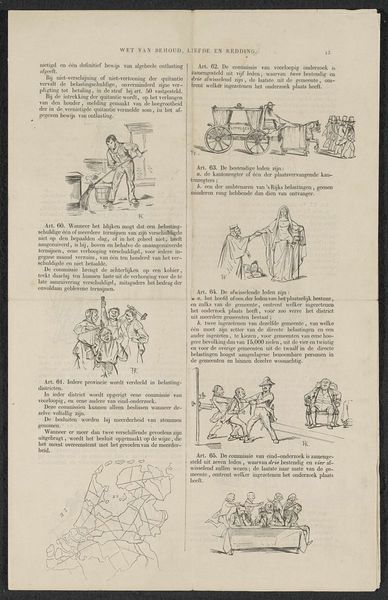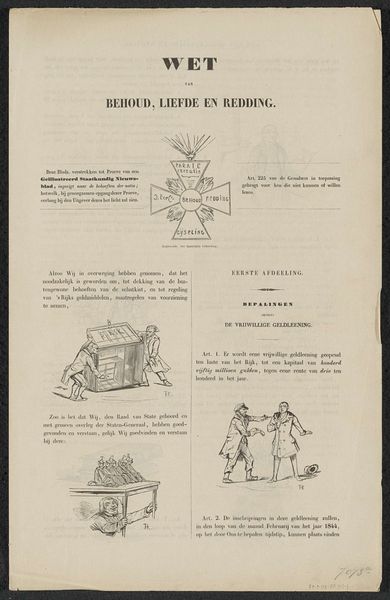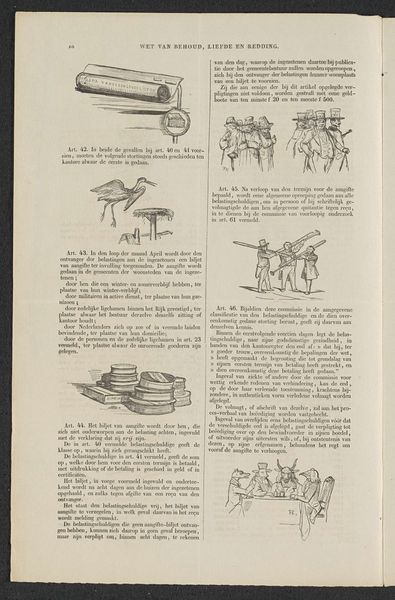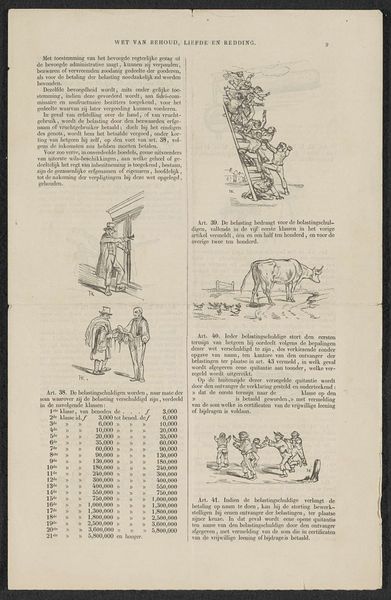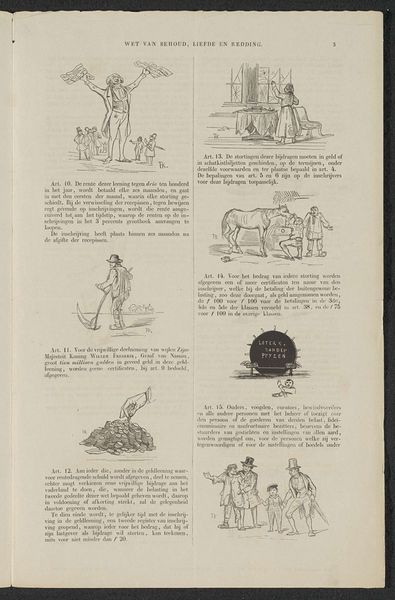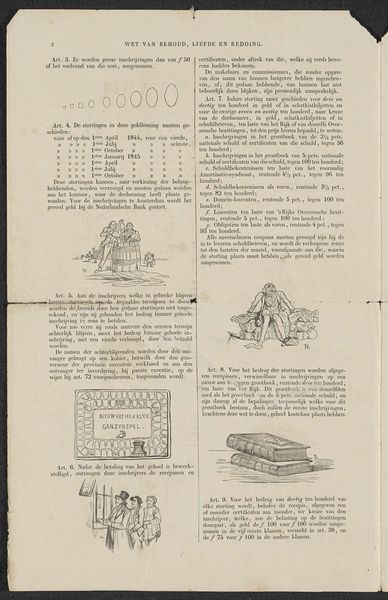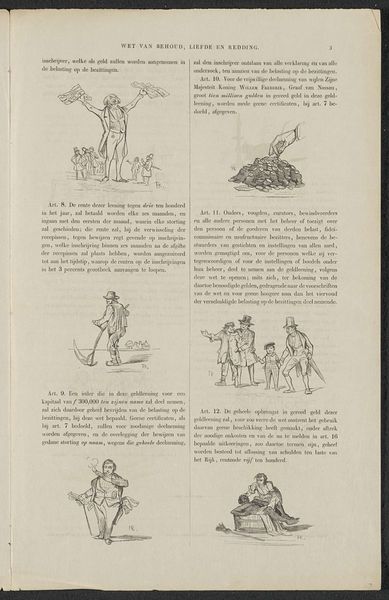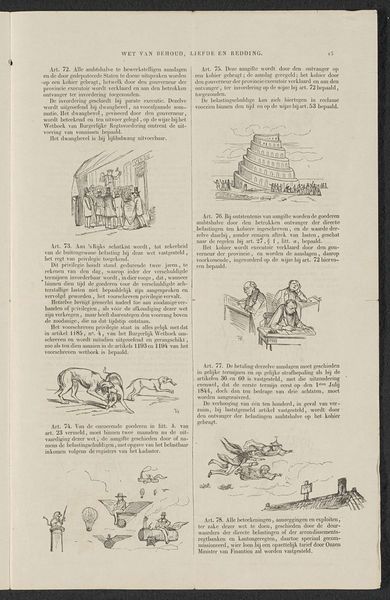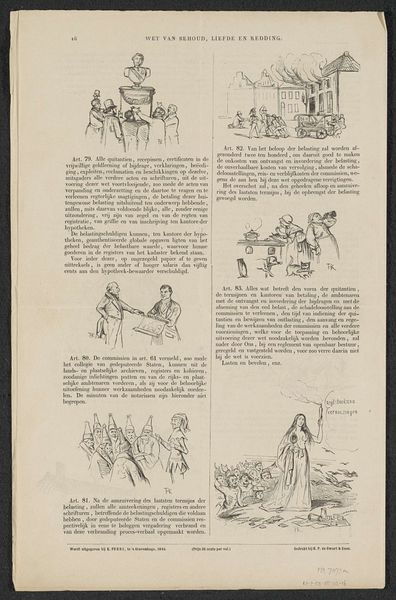
Herdruk van de satire op de aansporing tot deelneming in de (zogenaamde) vrijwillige 3% geldlening van 1844 (blad 1) 1844
0:00
0:00
graphic-art, print, pen, engraving
#
graphic-art
#
comic strip sketch
# print
#
caricature
#
sketch book
#
personal sketchbook
#
idea generation sketch
#
sketchwork
#
pen-ink sketch
#
pen work
#
sketchbook drawing
#
pen
#
storyboard and sketchbook work
#
sketchbook art
#
engraving
Dimensions: height 385 mm, width 245 mm
Copyright: Rijks Museum: Open Domain
This satirical print by Herman Frederik Carel ten Kate was made in 1844 in the Netherlands and is critical of the government's attempt to raise funds through a voluntary loan. The artist uses visual codes to undermine the official narrative. The words "Behoud, Liefde en Redding" – conservation, love and redemption – are mocked through the images. We can see a man pulling a boat ashore, but instead of saving the people, he's chopping their heads off. Another image shows people pushing a box labelled "risk", highlighting the perceived dangers of investing. The print suggests the loan is a scam. It mocks the self-serving interests of those in power. To fully understand this artwork, one would need to delve into the economic and political history of the Netherlands in the 1840s, exploring government records, newspapers, and political pamphlets from the time. Art history reminds us that meaning is always constructed within a specific social and institutional context.
Comments
No comments
Be the first to comment and join the conversation on the ultimate creative platform.
